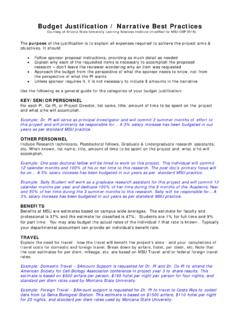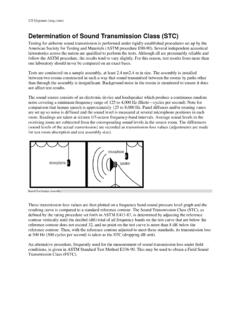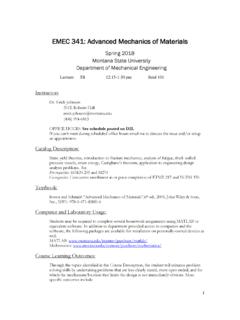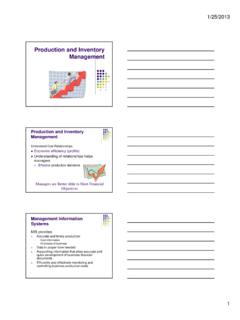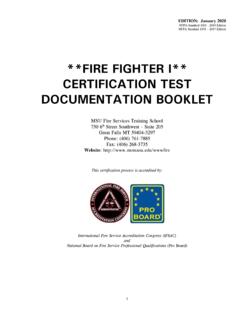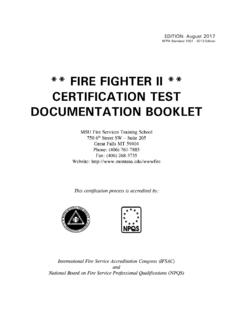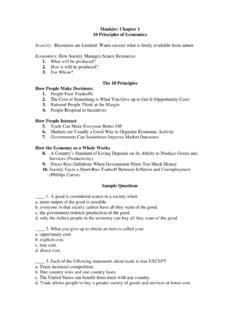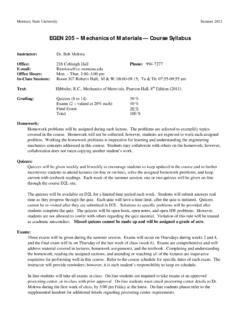Transcription of Sampling PAM- Pulse Amplitude Modulation (continued)
1 1 SamplingPAM- Pulse Amplitude Modulation (continued) EELE445-14 Lecture 14 SamplingProperties will be looking at for: Impulse Sampling Natural Sampling Rectangular Sampling2 Figure 2 18 Impulse SamplingsT2()()[]L++++=====++ = = =)3cos(2)2cos(2)cos(2112120)cos()(010ttt TtTDTDTtnDDnTttssssTsnsssnnnsnnsTss 3 Impulse Sampling ())( = =nsTnTtts )(tws()[][])(1)()()3cos(2)2cos(2)cos(21) ()()( = ==++++==nssssssssTsnffWTtwFfWtttTtwttwtw sL Impulse Sampling - text = = = = == = =nssstjnnssnssnssnffWTfWeTtwtwgsubsituti neqnTtnTwnTttwtws)(1)(1)()(,1712)()()()( )( 4 Impulse SamplingThe spectrum of the impuse sampled signal is the spectrum of the unsampled signal that is repeated every fsHz, where fsis the Sampling frequency or rate (samples/sec).
2 This is one of the basic principles of digital signal :This technique of impulse Sampling is often used to translate the spectrum of a signal to another frequency band that is centered on a harmonic of the Sampling frequency, fs>=2B, (see fig 2-18), the replicated spectra around each harmonic of fsdo not overlap, and the original spectrum can be regenerated with an ideal LPF with a cutoff of fs/2. Impulse SamplingUndersampling and SamplingGeneration of PAM with natural Sampling (gating).Natural SamplingDuty cycle =1/36 Natural Samplingssfdf3= at NullPAM and PCM PAM- Pulse Amplitude Modulation : The Pulse may take any real voltage value that is proportional to the value of the original waveform. No information is lost, but the energy is redistributed in the frequency domain.
3 PCM- Pulse Code Modulation : The original waveform Amplitude is quantized with a resulting loss of information7 Couch, Digital and Analog Communication Systems, Seventh Edition 2007 Pearson Education, Inc. All rights reserved. 0-13-142492-0 Figure 3 4 Demodulation of a PAM signal (naturally sampled).nthNyquist region recoveryComb Oscillatorn=1,2, , Digital and Analog Communication Systems, Seventh Edition 2007 Pearson Education, Inc. All rights reserved. 0-13-142492-0 Figure 3 5 PAM signal with flat-top sample and hold8 Couch, Digital and Analog Communication Systems, Seventh Edition 2007 Pearson Education, Inc.
4 All rights reserved. 0-13-142492-0 Figure 3 6 Spectrum of a PAM waveform with flat-top , Digital and Analog Communication Systems, Seventh Edition 2007 Pearson Education, Inc. All rights reserved. 0-13-142492-0 Figure 3 7 PCM trasmission Transmission Negative: The transmission bandwidth of the PCM signal is much larger than the bandwidth of the original signal Positive: The transmission range of a PCM signal may be extended with the use of a regenerative repeater. Couch, Digital and Analog Communication Systems, Seventh Edition 2007 Pearson Education, Inc. All rights reserved. 0-13-142492-0 Figure 3 8 Illustration of waveforms in a PCM , Digital and Analog Communication Systems, Seventh Edition 2007 Pearson Education, Inc.
5 All rights reserved. 0-13-142492-0 Figure 3 8 Illustration of waveforms in a PCM , Digital and Analog Communication Systems, Seventh Edition 2007 Pearson Education, Inc. All rights reserved. 0-13-142492-0 Illustration of waveforms in a PCM , Digital and Analog Communication Systems, Seventh Edition 2007 Pearson Education, Inc. All rights reserved. 0-13-142492-0 Illustration of waveforms in a PCM system. The error signal, (quantization noise), is inversely proportional to the number of quantization levels usedto approximate the waveform x(t) Companding is used to improve the SQNR (signal toquantization noise ratio) for small Amplitude x(T) signalsCouch, Digital and Analog Communication Systems, Seventh Edition 2007 Pearson Education, Inc.
6 All rights reserved. 0-13-142492-0 Figure 3 9 Compression characteristics (first quadrant shown).12 Couch, Digital and Analog Communication Systems, Seventh Edition 2007 Pearson Education, Inc. All rights reserved. 0-13-142492-0 Figure 3 9 Compression characteristics (first quadrant shown).Couch, Digital and Analog Communication Systems, Seventh Edition 2007 Pearson Education, Inc. All rights reserved. 0-13-142492-0 Figure 3 10 Output SNR of 8-bit PCM systems with and without companding.()[]()[]compandinglawAAnNScom pandinglawnNSquantionuniformxVnNSdBdBrms rangepeakdB + += + += += 1326 Quantization Noise,Analog to Digital Converter-A/DEELE445 Lecture 16 Couch, Digital and Analog Communication Systems, Seventh Edition 2007 Pearson Education, Inc.
7 All rights reserved. 0-13-142492-0 Figure 3 7 PCM trasmission (x)14 QuantizationV-V x(t)Q(x)nnMVMV2221=== )( xQxn=Quantization Results in a Loss of Informationx(t)Q(x)2 2 Lost InformationAfter Sampling , x(t)=xiR ixAfter Quantization:R =x,x Q(x)122 == nVMV15 Quantization NoiseQuantization function:Define the mean square distortion:2)(~))(()(22 = =xQxandxxQxxqQuantization()noiseonquanti zatithePMVdqqqnq== = = 22222223121where M=2n, V is the A/D input range,and n is the number of bitsnnMVMV2221=== 16 Quantization Noise from the expectation operator:)~(xf2 2 1x~()[][])(~))(( ,~ 2 XQXXXQXEXXdEDXandXX = == :ddistribute uniformly is error the of pdf The:as n)(distortio error squared mean the define can weSo are so variable, random a is Since =otherwisexxf02~22)~(SQNR Signal to Quantization Noise Ratio17 SQNR Signal to Quantization Noise RatioPxmay be found using:SQNR Signal to Quantization Noise RatioThe distortion, or noise , is therefore.
8 Where Pxis the power of the input signal18 SQNR Linear Quantization[]12max2max2< xPxXExThe SQNR decreases asThe input dynamic rangeincreasesU-Law Nonuniform PCMused to increase SQNR for given Px, xmax, and nU=255 Nonuniform PCMa= Linear Quantization8 bitPxis signal powerRelative to full scalePx20 Pulse Code Modulation , PCM, Advantagecompared with analog systems b is the number of bits is (S/N)basebandRelative to full scale PPM is Pulse position modulatio
